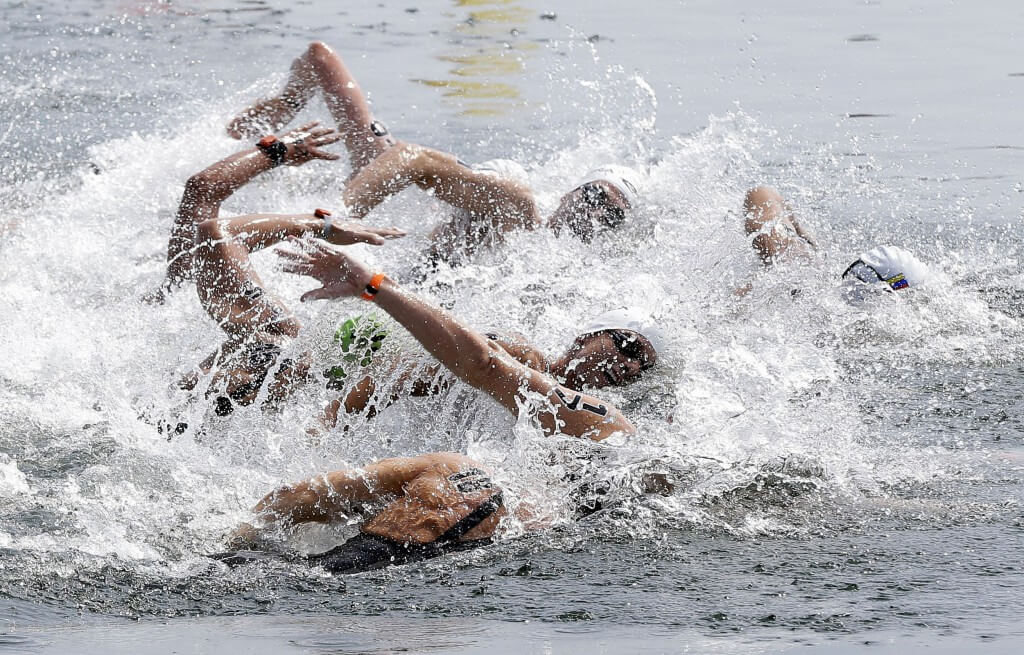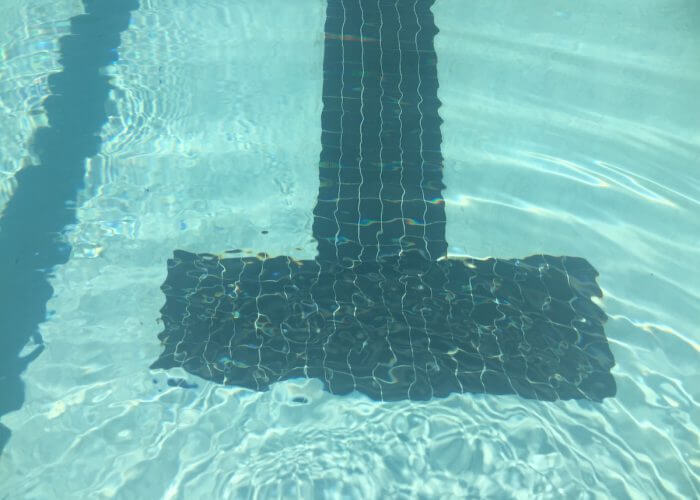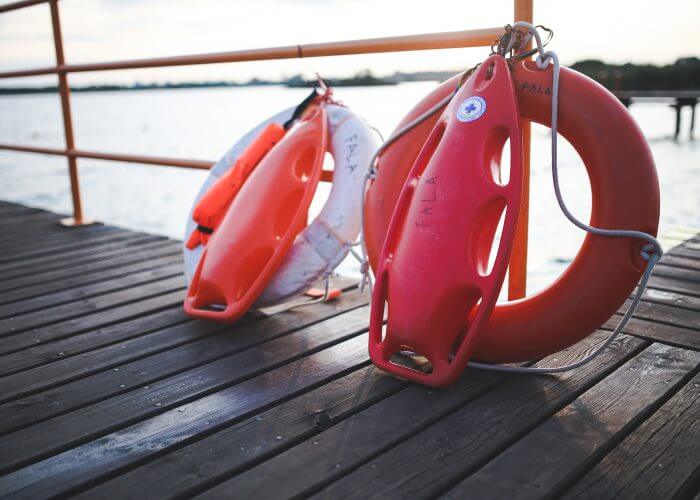Transitioning From The Pool to Open Water: A Guide For Pool Swimmers to Master The New Element

Transitioning From The Pool to Open-Water: A Guide For Pool Swimmers to Master The New Element
By Vanessa Steigauf, Swimming World College Intern
Many pool swimmers do, at some point in their careers, switch to open-water swimming. It might be the curious swimmer who wants to try something new, the long-distance swimmer who thinks the mile in the pool just isn’t long enough, or simply any ambitioned swimmer who missed the sport during the Covid pandemic. No matter why you choose to try open-water swimming, there are some aspects to keep in mind when you’re new to it and more used to training in the familiar environment of a pool.
There Is No Black Line to Guide You

Photo Courtesy: Cathleen Pruden
As a pool swimmer, the only issue you might have had with orientation is that you lost count during a 500 at practice. When you are transitioning from the pool to open-water, orientation will get a whole new meaning once you get in and don’t have that black line and familiar tiles on the bottom to follow. Trying to swim straight while learning certain breathing techniques and using surrounding landmarks as orientation will be a totally new aspect of your swimming experience.
Keep an Eye on Temperatures
While the pool always has those 78-degree momenyts that already feel freezing – especially when you have to get in at 6:00 in the morning – the open waters are ever-changing in temperature. You’ll get to experience what water temperatures below 70 degrees feel like. And with that, you might want to get familiar with swimming in a wet suit. …and with checking the weather forecast.
You’re Not Alone
In the pool it’s only some impatient teammate who keeps touching your feet after every turn but won’t go ahead of you. When you’re transitioning from the pool to open-water swimming, this might happen to you as well. But this time it is far more likely that a fish or some water plant got stuck in your feet. In that case, it’s time to stay calm and not freak out – it’s only nature saying hello!
Safety First!

Photo Courtesy: Pexels
The next thing to say after “you’re not alone” is “you shouldn’t be alone”! Always try to have someone who is with you in the water or who keeps an eye on you from the shore. If that’s not possible, take a buoy with you. It can give you something to hold on to if you are tired. But it also signals those who you share the water with that you are there. If it comes to swimmer vs. boat, it’s clear who’ll lose.
Endurance Is The New Black
There are no short and fast 50s in open-water swimming. For every practice and race you will have to focus on a long and efficient stroke. Don’t underestimate the demanding parts and possible dangers of this. Even experienced swimmers can fatigue too soon which makes them drop out of a race early. But don’t worry: with the right preparation and race strategy, open-water swimming is definitely doable.
There are No Walls
No, you won’t have that little break after every 25 or 50 yards. No, you won’t have that little extra speed after every push off the wall. And yes, it will feel like forever you’re swimming in the same spot, not moving forward an inch. But that’s what makes open-water swimming so interesting. And challenging.
The Mental Part About Open-Water Swimming
No doubt, open-water swimming is the most challenging form of swimming. You have to consider all the different variables that influence your swimming and just don’t exist in the pool. You also have to be prepared for whole new mental challenges waiting for you in the open water. When there is no land in sight, a fish touching your foot, and waves throwing you up and down, it’s hard to not freak out. It is important to stay calm and take a deep breath. When you are transitioning from the pool to open-water, focus on small steps and little goals first and surround yourself with other ambitioned swimmers. Recognize the power of the water around you and never forget to trust in your own abilities.
With these aspects in mind, your next open-water swim will definitely be a great experience!
All commentaries are the opinion of the author and do not necessarily reflect the views of Swimming World Magazine nor its staff.



